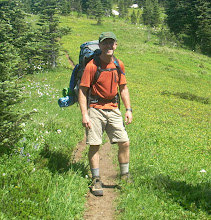While I was stationed at RAF Mildenhall, England back in the 80's I learned just how insanely dedicated some of the British were about aircraft. Plane spotters sat outside the fence watching the runway, duly noting the time, date, tail number and type of aircraft of every take off and landing. This scene repeated itself at every base in England as well as throughout Europe. The resulting data were compiled and correlated and even published in books. You could look up a C-141 tail number and see it's history of flight in Europe. Plane spotting at Mildenhall was a treat because the SR-71 flew out of there, but I digress.
As a member of the base's speakers bureau I volunteered to go out to different groups and give talks on a variety of subjects. It was fun and I got to meet a lot of interesting people. One evening I was tasked with speaking at a ceremony being held at the Fenland Aircraft Preservation Society. My memory is fuzzy but from their history I'm quite sure I was there for the June '87 dedication of their museum. (True to maintaining proper form, they renamed the museum about six months later once they realized it was technically in Norfolk and not in Fenland. I love it.) My talk was about George Holmes, the last enlisted pilot in the US Air Force.
These guys were nuts, but in a good way. They were nuts about airplanes and they were nuts about digging up airplanes. Digging up airplanes? Note the name, Fenland. A fen is wet, marshy land. A bog. Back during WWII an occasional aircraft crashed in the fens. If the records showed that a body was likely in the plane then it was considered a grave site and could not be disturbed. But if it was unoccupied, you could apply for a permit to dig it up. That's what these guys did. They researched aircraft crashes in the fens and poked around in the marshes looking for clues. After locating a site they would--sometimes at great peril to themselves--try to dig up the plane or whatever parts they could find. Thirty and forty years after WWII any wreckage would have sunk deep into the wet ground. Bracing the sides of their excavation with sheets of plywood and lumber they cheerfully risked being buried alive just to retrieve an engine or piece of fuselage. Members kept these pieces and parts in sheds and barns until they decided to create a museum. That evening I certainly learned a lot more from them than they did from me.
So why do I bring this up? It turns out a British enthusiast has discovered the location of up to 20 Spitfires buried in Burma. When I read that I immediately thought of those passionate fellows in Fenland. For them it would have been like finding the Holy Grail.
River Kwai and Elephants
1 month ago

No comments:
Post a Comment